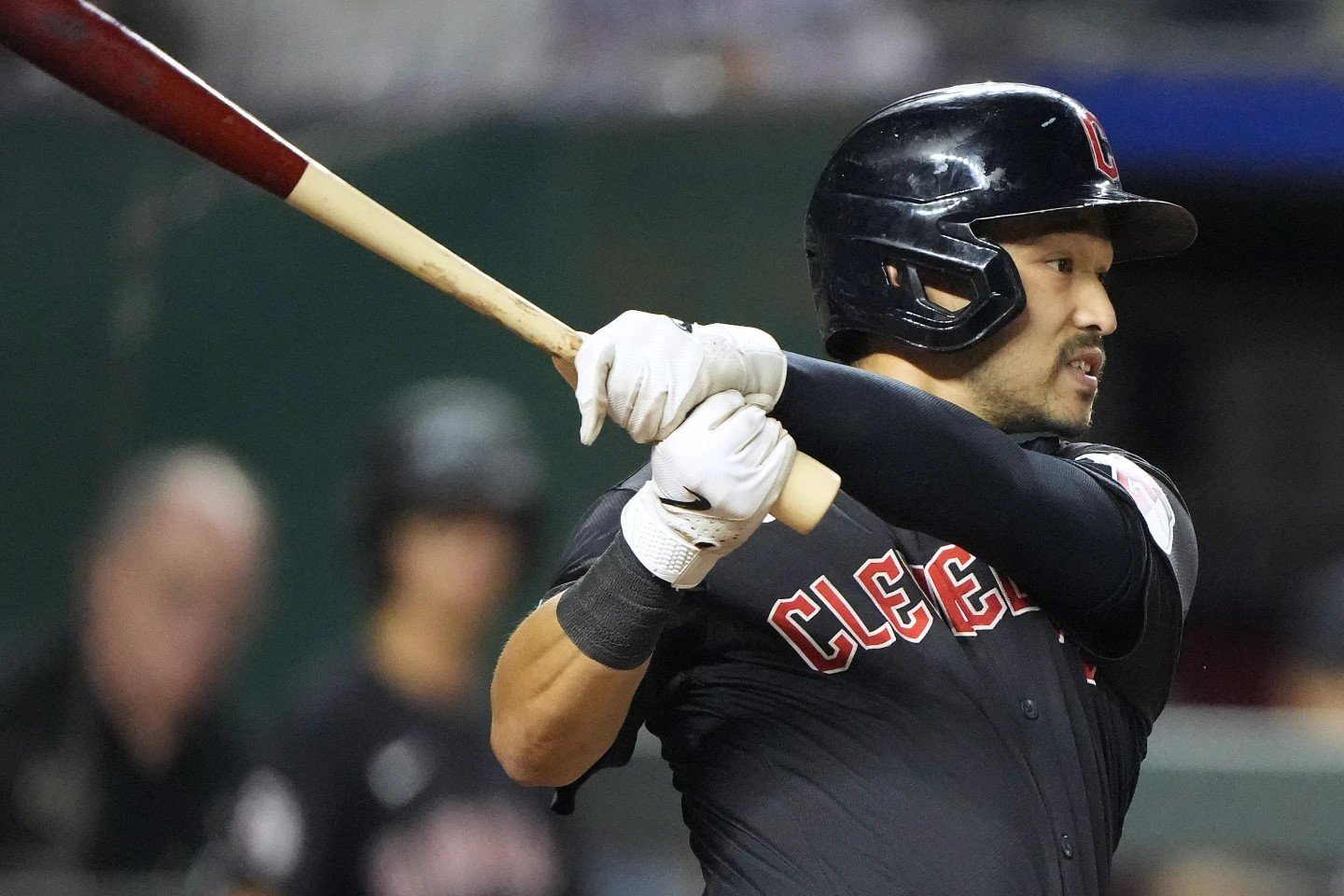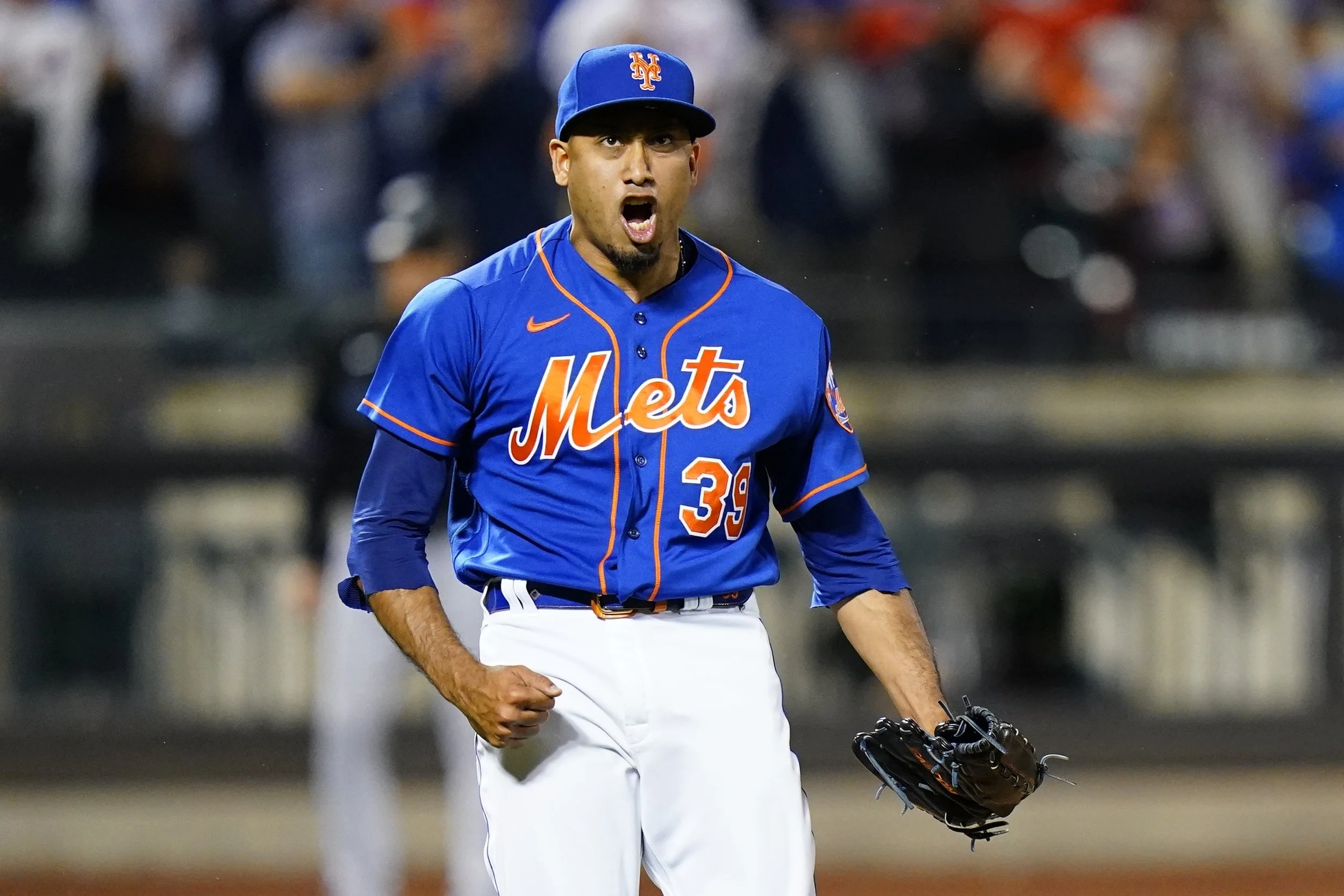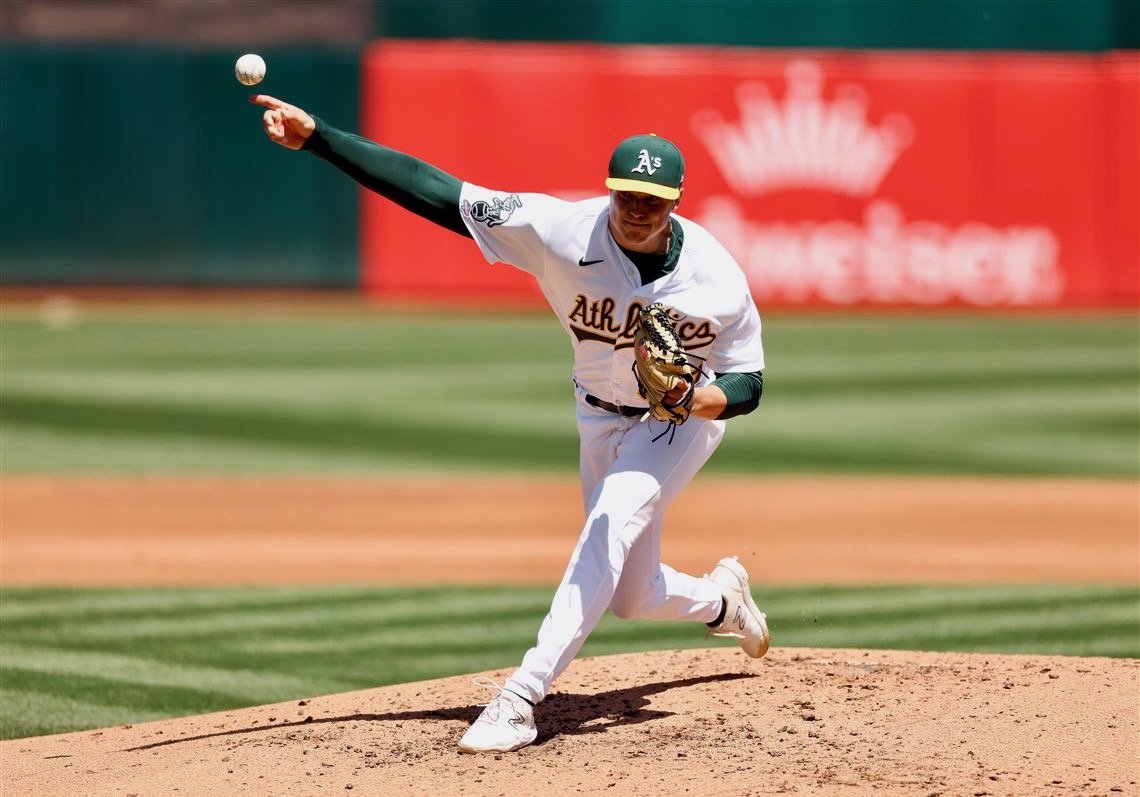
Can Volpe Become a Better Base-Stealer?
With Statcast’s new baserunning and basestealing data released to the public, I wanted to take a look at the top base-stealers in 2024. Yankees shortstop Anthony Volpe increased his stolen base total from 24 in 2023 to 28 this past season. How does he compare to the top base-stealers in the league, and how can we expect him to improve?
Photo Credit: Charles Wenzelberg/New York Post

Dollar/WAR in the 2024/2025 MLB Free Agency Market
Last offseason, I examined the trend in dollar/WAR (wins above replacement) for free agent signings. In this analysis, I’ll revisit the dollar/WAR figures for this year’s free agency market and dive deeper into the evolving spending patterns.
Photo Credit: Marca

How Will Roki Sasaki Fare in the MLB?
23-year-old Japanese phenom Roki Sasaki, a star pitcher for the Chiba Lotte Marines in Nippon Professional Baseball (NPB), has officially been posted for MLB teams to sign. Sasaki is set to become the most cost-effective elite starting pitcher available this offseason due to his international amateur status. Being under 25, he must sign a rookie deal that pays the MLB minimum for three seasons, followed by three years of arbitration before reaching unrestricted free agency—mirroring Shohei Ohtani’s early MLB trajectory.
Last offseason, Yoshinobu Yamamoto was posted and signed by the Dodgers. As some may recall, I did an analysis back then aiming to predict how Yamamoto would fare in the world’s best baseball league. Using that same logic, but adding Yamamoto’s predicted and actual data to my dataset for the model, how is Sasaki projected to perform in the MLB?
Photo Credit: AP

How Should The Yankees Pitch Against The Dodgers?
A thrilling postseason is approaching its climax—a battle between each league’s juggernaut team. The 27-time champion Yankees are in the World Series for the first time since 2009 and the 7-time champion Dodgers are back in the Fall Classic for the fourth time in the last eight seasons, aiming to secure their first full-season title since 1988. The most common World Series matchup in being renewed for 12th time, the first since 1981 in which the Dodgers beat the Yankees in 6 games. The Yankees have won eight of their eleven World Series meetings, including the first five.
The Dodgers lineup averaged 5.2 runs per game this season (second to only the Diamondbacks). How should the Yankees pitch to them in their attempt at capturing their 28th title?
Photo Credit: Megan Briggs/Getty Images)

Which Batters Swing Least Often and Most Often on First Pitches?
Securing strike one is vital for pitchers, and many hitters prefer to take the first pitch to gauge the pitcher’s release, velocity, and movement. In this analysis, I’ll highlight the 15 batters with the lowest and highest first-pitch swing percentages among all qualified hitters in 2024, and provide tips on how to effectively pitch to them.
Photo Credit: AP Photo/Charlie Riedel

Which Playoff Teams Have the Most Dominant Pitching?
October baseball is in full swing, and the Wild Card round didn’t disappoint! We saw some stunning upsets: the Tigers ousted the Astros, the Royals knocked out the Orioles, the Mets took down the Brewers, and the Padres triumphed over the Braves in the only series in which the home team won. Now, with just eight teams remaining, it's time for my final xwFIP analysis of the season. I'll be crowning the regular season champions among all pitchers and starters, and taking a deep dive into which playoff pitching staffs are best equipped to silence opposing lineups this fall.
Photo Credit: Frank Franklin II/Associated Press

Evaluating Fangraphs Playoff Projections
As the September playoff race heats up, key division battles are emerging: the Yankees are locked in with the Orioles in the AL East, and the Guardians are head-to-head against the Royals in the AL Central. The Wild Card chase is just as exciting, with the Twins and Tigers vying for the final AL spot, while the Padres, Diamondbacks, Mets, and Braves compete in the NL. Meanwhile, the Phillies, Dodgers, and Brewers are jockeying for the top two seeds in the National League, hoping to capture the first round bye.
This post will introduce a Paraball Win Probability Model that assesses a team's chances in matchups against a .500 opponent. I will compare its results with Fangraphs’ Playoff Simulation to identify teams that Fangraphs overvalues or undervalues.

Introducing pWAR and Using It to Predict Who Wins Cy Young
Who will win the AL and NL Cy Young Awards? In this analysis, I’ll introduce a new cumulative win value statistic, Paraball Wins Above Replacement, orpWAR, in order to identify the most deserving candidates.
Photo Credit: Any Lyons/Getty Images

Does Changing Your Batspeed Impact Your Offensive Production?
In May this year, Statcast released batspeed data, and I've been eagerly waiting for the sample sizes to grow large enough for a meaningful analysis. Now, three months in, we're ready to dive in. In this post, I’ll be examining the batspeed-tracked swings of Shohei Ohtani, Aaron Judge, Juan Soto, and Giancarlo Stanton.
How do their swing speeds vary depending on the count, and how do these variations impact their performance?
Photo Credit: Latinweb

Should Clay Holmes Be the Yankees Closer?
Yankees right-hander Clay Holmes has had a roller-coaster season. After nailing down the save in Sunday’s game against Texas, Holmes has 25 saves and is tied with Josh Hader of the Astros and Robert Suarez of the Padres for 4th in the MLB. Holmes, however, leads MLB with 9 blown saves. The next highest number of blown saves by one of MLB’s top closers is just 4, by the Nationals Kyle Finnegan.
Should Holmes be the Yankees closer? In this analysis, I'll examine Holmes' distribution of runs allowed, compare it to the league average, and assess whether he is well-suited for the closer role.
Photo Credit: AP Photo/Adam Hunger

What Were The Best Trade Deadline Pitching Acquisitions, According to xwFIP?
Following the recent trade deadline, I’ll take a closer look at the ten best pitching acquisitions of 2024. Which team made the best acquisitions, judging by pitching metric xwFIP? And how does the xwFIP leaderboard stack up for all pitchers this season through July?
Photo Credit: Getty Images

Quantifying Momentum in Major League Baseball
The team that scores first in the MLB wins 69% of the time. That number may feel surprisingly high for a sport that averages just under 4.5 runs per game per team. Why is taking and keeping a lead in baseball so vital?
Photo Credit: Seth Wenig/AP Photo

Opinion: How Can We Evaluate Base Stealing More Precisely?
Consider this scenario: Two players each have 30 base steals and 5 bases caught stealing. With an 86% success rate, both players appear to be helping their teams significantly by risking taking the extra base. However, 35 attempts is quite a small sample size. The standard deviation of the number of stolen bases in this case is 2.07. So, there’s a 2.5% chance that the base-stealer’s true success rate is actually lower than 74%, in which case the advice to that player would be to steal fewer bases. Essentially, for many players, it can be hard to tell If they should steal more or less, purely based on their stolen bases and caught stealing, since the sample sizes are small.
What if we had a metric that would give us even more confidence in telling the players to steal more frequently?
Photo Credit: John Fisher/Getty Images

The Second Best Starter in Baseball is a Converted Reliever
Garrett Crochet pitched 72 games and 73 innings as a reliever from 2020 to 2023, missing the entire 2022 season recovering from Tommy John surgery. The White Sox, desperate for starting pitching, saw something they liked in Crochet and gave him a chance to start in 2024. Crochet has not disappointed, ranking 2nd among starting pitchers in xwFIP through June. If traded later this month, he can quickly retool Chicago’s farm system.
At the end of April, Crochet ranked 6th among starters with a 2.98 xwFIP, despite a 6.37 ERA and a 4.20 FIP. At the end of May, Crochet’s ranking was up to 3rd among all pitchers and 1st among starters with a 2.02 xwFIP, despite an ERA of 3.49 and a FIP of 3.00. Now, through June, Crochet is 2nd among starters and 6th among all pitchers with a 2.71 xwFIP, and his ERA and FIP have dropped to 3.02 and 2.47, respectively.
Photo Credit: John J. Kim/Chicago Tribune

Is Yankee Stadium a Lefty-Friendly Ballpark?
Yankee Stadium is well known for the short porch in right field. In fact, the right field in Yankee Stadium is closer to home plate than in any other ballpark, extending from right-center field to the short porch near the right field foul pole.
Can we quantify the advantage of being left-handed in Yankees Stadium? To find out, I’ll take a look at the relative performance of both right-handed and left-handed batters and pitchers in Yankee Stadium (YS) and compare those numbers to the league as a whole.
Photo Credit: AP Photo/Mary Altaffer

Why Are Intentional Walks Excluded from wOBA?
wOBA both ignores intentional walks (IBBs) and values hit-by-pitches (HBPs) higher than unintentional walks (uBBs). I’ve frequently had this discussion with my friend and former colleague Rob DeLuca: Can one of our most advanced and run-correlated offensive metrics be improved?
In this analysis, I’ll take a look at all the uBBs, IBBs, and HBPs in 2015-2016, a time when Statcast was separately marking IBBs on a pitch-by-pitch basis, and compare the change in run value for each stat category.
Photo Credit: Adam Hunger/Getty Images

Where Does The Performance of Top Pitching Prospect Paul Skenes Rank?
Pirates rookie right-hander Paul Skenes has debuted his electric stuff with 30 strikeouts over 4 starts and 22 innings pitched. Skenes, baseball’s number one pitching prospect and number two overall prospect, was drafted 1st overall out of LSU last year. He features a 99 mph 4-seamer, a 94 mph splitter, and an 85 mph slider; and he ranks in the 99th percentile in fastball velocity and the 98th percentile in strikeout rate.
Where does Skenes stack in this month’s xwFIP rankings?
Photo Credit: Jonathan Dyer/USA TODAY Sports

Why Do Lefty Batters Hit into Fewer Double Plays?
Over the last 9+ seasons, MLB pitchers have been able to induce about 1.5 double plays per game—0.75 for each team. Double plays enable pitchers to both get out of major jams and keep their pitch counts manageable.
In this analysis, I’ll examine the difference in the propensity to ground into double plays for righty batters and lefty batters and determine what this could mean for in-game strategy.
Photo Credit: AP Photo/Seth Wenig

The Pitchers with the Best xwFIP: April Edition
This past offseason, I introduced the pitching metric xwFIP in a series of three posts. xwFIP is an advanced fielding independent pitching metric that not only takes into account walks, hit batsmen, strikeouts, and homeruns, but also the xwOBA on batted balls. The metric takes into account nearly 100% of plate appearances in its calculation. Moreoever, I have showcased that it has greater predictive power than each of ERA, wOBA, FIP, xFIP, xwOBA, and SIERA in predicting future run prevention performance of a pitcher.
This season, I’ll be posting the xwFIP leaderboard each month so we can see the starters and relievers that are most likely to have continued success, along with the pitchers who have been lucky and unlucky so far.
Photo Credit: Ezra Shaw/Getty Images

Is the Dodgers' Starting Lineup Optimal?
After winning the offseason by signing two-way superstar Shohei Ohtani, Japenese ace Yoshinobu Yamamoto, and slugger Teoscar Hernandez, while trading for ace Tyler Glasnow, the Dodgers are off to a fast start in 2024 with a 10-5 record, averaging a bludgeoning 5.4 runs per game (PECOTA projects them to average 5.38 this season). It doesn’t look like the team needs any help.
However, is their lineup construction optimal? In this analysis, I will assess if there is room for improvement.
Photo via Baseball Prospectus